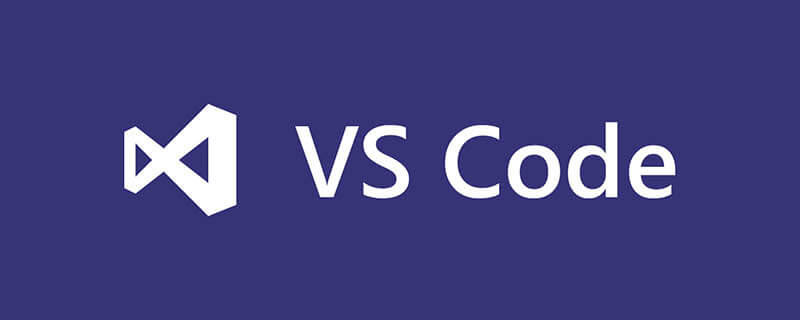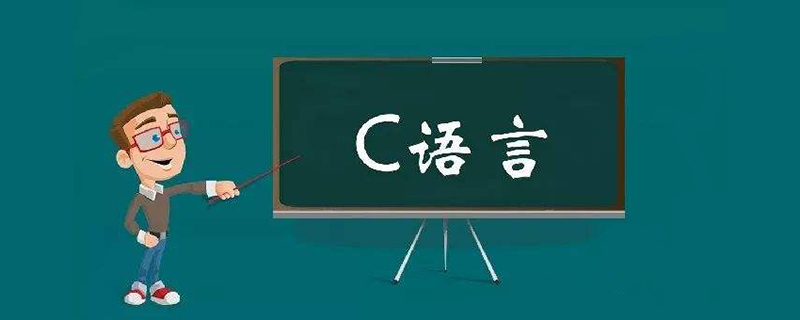No. The C language itself does not provide input and output statements. Input and output operations are implemented by functions. The purpose of not treating input and output as statements provided by the C language is to make the C language compilation system simple, because the instructions for translating statements into binary are completed during the compilation phase. The absence of input and output statements can avoid dealing with hardware-related issues during the compilation phase. , which can simplify the compilation system, has strong versatility and good portability, is applicable to various types of computers, and is easy to implement on various computers.

The operating environment of this tutorial: windows7 system, c99 version, Dell G3 computer.
The c language itself has no input and output statements. The C language itself does not provide input and output statements. Input and output operations are implemented by functions, and reading and writing files are also implemented using library functions.
The standard function library of C language provides some input and output functions, such as: printf function and scanf function. However, the printf and scanf functions are not keywords in the C language, just the names of the functions.
The functions provided by C are stored in the system in the form of libraries. They are not part of the C language text. The purpose of not treating input and output as statements provided by C language is to make the C language compilation system simple, because the instructions for translating statements into binary are completed during the compilation phase. No input and output statements can avoid processing with the hardware during the compilation phase. Related issues can simplify the compilation system, and it is highly versatile and portable. It is applicable to various types of computers and is easy to implement on various computers.
Various versions of C language function libraries are written by various computer manufacturers for a certain type of computer, and have been compiled into object files (.obj files). During the linking phase, they are connected with the object files compiled from the source program to generate an executable object program. If there is a printf function in the source program, it is not translated into a target instruction during compilation, but the printf function in the connected function library is called during the execution phase.
Expand knowledge:
Unlike other computer programming languages, most functions in C language are implemented through function calls , so the number of statements in C language itself is small. The C language adopts a method that makes the expansion of language functions very convenient. If you need to add new functions, you only need to add the corresponding functions in the function library; and if the function of a function needs to be adjusted, you only need to modify the code of the function itself, but you do not need to modify other programs that call the function. .
The functions in the C language are called system functions. Users can directly call these functions to complete the corresponding functions. For example, printf, fabs, etc. are all system functions. System functions are stored in system files called "C function libraries". When a function needs to be used, the system should be notified of the function library where the function is located. This is achieved by including a header file. For example, the basic framework of the C program shown below:
#include "stdio.h"
#include "conio.h"
int main(void)
{
/* 此处添加你自己的代码 */
getch();
return 0;
}#include "stdio.h"The preprocessing statement is to notify the system to include the stdio.h header file into this program file, so that you can use the system functions that have been defined in it.
The basic input function in C language is realized by using the function scanf, and the basic output function is realized by using the function printf. The header files of these two functions are stdio.h, but since these are two very commonly used functions, the C language stipulates that the corresponding #include# can be omitted when using these two functions. ##Order.
#include is called the file inclusion command, which is used to introduce the corresponding header file (.h file). #include is also a type of C language preprocessing command. The processing process of
#include is very simple, which is to insert the contents of the header file into the location of the command, thereby connecting the header file and the current source file into one source file, which is the same as copying Pasting has the same effect.
#include <stdHeader.h> #include "myHeader.h"Use angle brackets
and double quotes " " The difference is that the search paths for header files are different:
- Use angle brackets
, the compiler will search for header files in the system path; - With double quotes
" "
, the compiler first searches for the header file in the current directory. If it is not found, it then searches for it in the system path.
- One #include command can only contain one header file, and multiple header files require multiple #include commands.
- The same header file can be introduced multiple times. The effect of multiple introductions is the same as the effect of one introduction, because the header file has a mechanism to prevent repeated introduction at the code level. We will discuss the specific details. Explore in depth in the article "Preventing C Language Header Files from being Repeatedly Included".
File inclusion allows nesting, which means that another file can be included in an included file.
Related recommendations: "C Video Tutorial"
The above is the detailed content of Does the C language itself have input and output statements?. For more information, please follow other related articles on the PHP Chinese website!
 (超详细)VScode中配置C语言环境的方法Dec 05, 2022 pm 07:05 PM
(超详细)VScode中配置C语言环境的方法Dec 05, 2022 pm 07:05 PMVScode中怎么配置C语言环境?下面本篇文章给大家介绍一下VScode配置C语言环境的方法(超详细),希望对大家有所帮助!
 c语言中node是什么意思Jul 06, 2022 pm 03:51 PM
c语言中node是什么意思Jul 06, 2022 pm 03:51 PM在C语言中,node是用于定义链表结点的名称,通常在数据结构中用作结点的类型名,语法为“struct Node{...};”;结构和类在定义出名称以后,直接用该名称就可以定义对象,C语言中还存在“Node * a”和“Node* &a”。
 c语言开根号运算符是什么Mar 06, 2023 pm 02:39 PM
c语言开根号运算符是什么Mar 06, 2023 pm 02:39 PM在c语言中,没有开根号运算符,开根号使用的是内置函数“sqrt()”,使用语法“sqrt(数值x)”;例如“sqrt(4)”,就是对4进行平方根运算,结果为2。sqrt()是c语言内置的开根号运算函数,其运算结果是函数变量的算术平方根;该函数既不能运算负数值,也不能输出虚数结果。
 c语言怎么将数字转换成字符串Jan 04, 2023 pm 03:20 PM
c语言怎么将数字转换成字符串Jan 04, 2023 pm 03:20 PMc语言将数字转换成字符串的方法:1、ascii码操作,在原数字的基础上加“0x30”,语法“数字+0x30”,会存储数字对应的字符ascii码;2、使用itoa(),可以把整型数转换成字符串,语法“itoa(number1,string,数字);”;3、使用sprintf(),可以能够根据指定的需求,格式化内容,存储至指针指向的字符串。
 c语言数组如何初始化Jan 04, 2023 pm 03:36 PM
c语言数组如何初始化Jan 04, 2023 pm 03:36 PMC语言数组初始化的三种方式:1、在定义时直接赋值,语法“数据类型 arrayName[index] = {值};”;2、利用for循环初始化,语法“for (int i=0;i<3;i++) {arr[i] = i;}”;3、使用memset()函数初始化,语法“memset(arr, 0, sizeof(int) * 3)”。
 c语言合法标识符的要求是什么Aug 27, 2020 pm 01:47 PM
c语言合法标识符的要求是什么Aug 27, 2020 pm 01:47 PMc语言合法标识符的要求是:1、标识符只能由字母(A~Z, a~z)、数字(0~9)和下划线(_)组成;2、第一个字符必须是字母或下划线,不能是数字;3、标识符中的大小写字母是有区别的,代表不同含义;4、标识符不能是关键字。
 c语言中源文件编译后生成什么文件Nov 23, 2022 pm 07:44 PM
c语言中源文件编译后生成什么文件Nov 23, 2022 pm 07:44 PMc语言编译后生成“.OBJ”的二进制文件(目标文件)。在C语言中,源程序(.c文件)经过编译程序编译之后,会生成一个后缀为“.OBJ”的二进制文件(称为目标文件);最后还要由称为“连接程序”(Link)的软件,把此“.OBJ”文件与c语言提供的各种库函数连接在一起,生成一个后缀“.EXE”的可执行文件。
 c语言怎么计算n的阶乘Jan 04, 2023 pm 03:18 PM
c语言怎么计算n的阶乘Jan 04, 2023 pm 03:18 PMc语言计算n的阶乘的方法:1、通过for循环计算阶乘,代码如“for (i = 1; i <= n; i++){fact *= i;}”;2、通过while循环计算阶乘,代码如“while (i <= n){fact *= i;i++;}”;3、通过递归方式计算阶乘,代码如“ int Fact(int n){int res = n;if (n > 1)res...”。


Hot AI Tools

Undresser.AI Undress
AI-powered app for creating realistic nude photos

AI Clothes Remover
Online AI tool for removing clothes from photos.

Undress AI Tool
Undress images for free

Clothoff.io
AI clothes remover

AI Hentai Generator
Generate AI Hentai for free.

Hot Article

Hot Tools

PhpStorm Mac version
The latest (2018.2.1) professional PHP integrated development tool

SublimeText3 Mac version
God-level code editing software (SublimeText3)

mPDF
mPDF is a PHP library that can generate PDF files from UTF-8 encoded HTML. The original author, Ian Back, wrote mPDF to output PDF files "on the fly" from his website and handle different languages. It is slower than original scripts like HTML2FPDF and produces larger files when using Unicode fonts, but supports CSS styles etc. and has a lot of enhancements. Supports almost all languages, including RTL (Arabic and Hebrew) and CJK (Chinese, Japanese and Korean). Supports nested block-level elements (such as P, DIV),

Notepad++7.3.1
Easy-to-use and free code editor

Safe Exam Browser
Safe Exam Browser is a secure browser environment for taking online exams securely. This software turns any computer into a secure workstation. It controls access to any utility and prevents students from using unauthorized resources.






